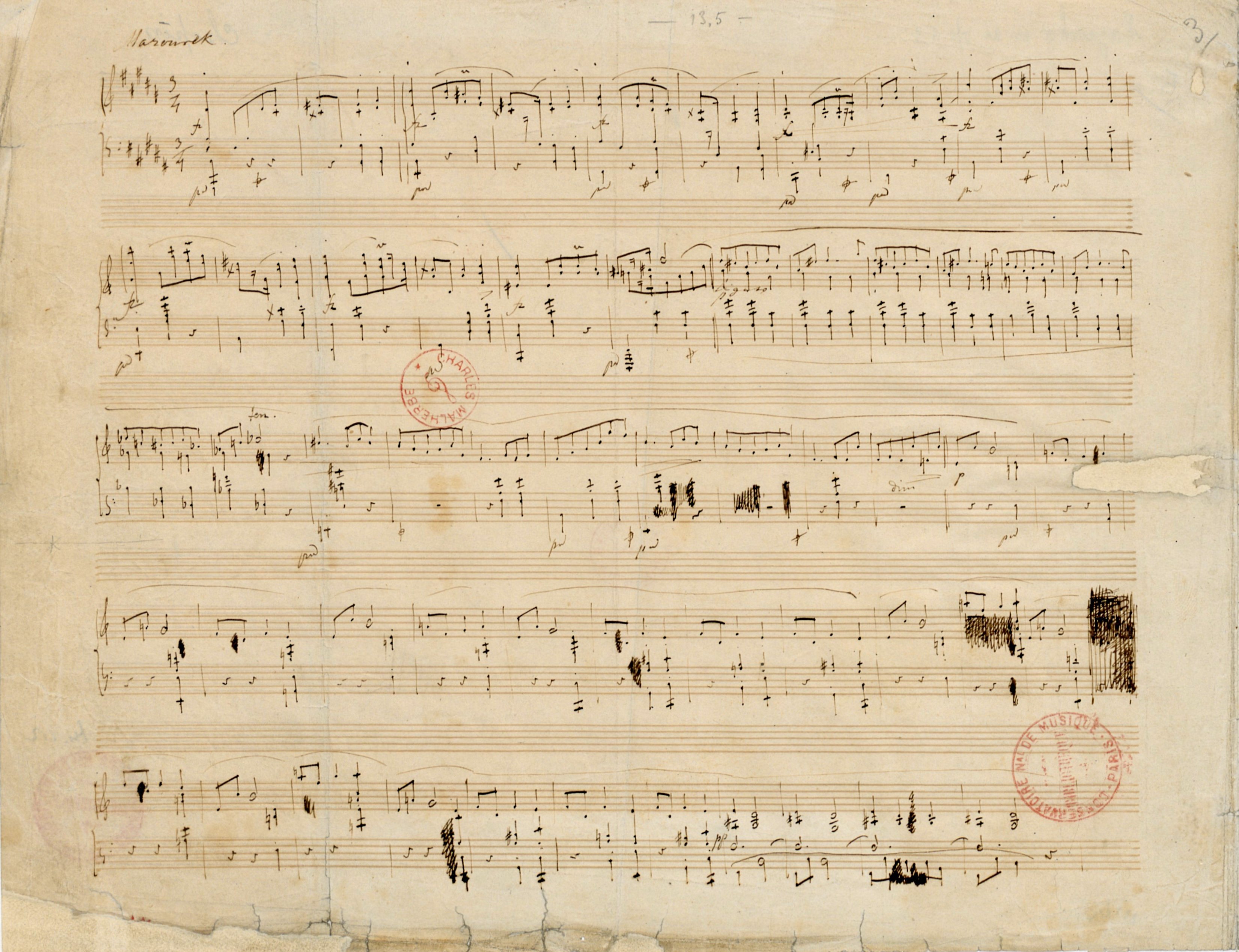



In FE the mordent was placed under the d 1-f
1-f 1 third, which suggests that it concerns the bottom note, d
1 third, which suggests that it concerns the bottom note, d 1. It must be a mistake – cf. the text of AI and bars 13 and 73 – caused by a tendency to place marks, e.g. accents, staccato dots, slurs or certain ornaments (
1. It must be a mistake – cf. the text of AI and bars 13 and 73 – caused by a tendency to place marks, e.g. accents, staccato dots, slurs or certain ornaments ( and
and  ) on the side of noteheads. In the case of ornaments and slurs, it can change their meaning, thus leading to a mistake, as is the case here (see also, e.g. the Polonaise in F
) on the side of noteheads. In the case of ornaments and slurs, it can change their meaning, thus leading to a mistake, as is the case here (see also, e.g. the Polonaise in F minor, Op. 44, bar 10).
minor, Op. 44, bar 10).
There is a similar situation in bars 7, 71 and 75.
Compare the passage in the sources »
category imprint: Differences between sources
issues: Placement of markings, GE revisions, FE revisions
notation: Ornaments

